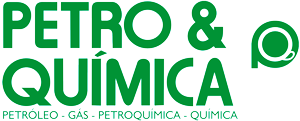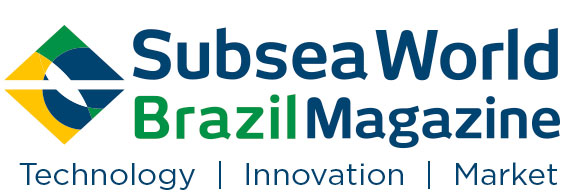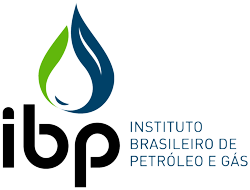Notícias
The quality control of the laboratories that serve the pharmaceutical industries aims at guaranteeing the quality of the products and services provided. In recent years, due to the new resolutions of the Brazilian Health Regulatory Agency (ANVISA) related to analytical laboratories, two new standards (RDC 301/2019 and RDC 390/2020) have been issued, and these are focused on good practices, restricting the operation to the laboratories that attend to those requirements. Therefore, the only way for the laboratories to be adequate to the Brazilian legislation is by implementing these standards. Thus, the present work aims at creating a model for a hybrid QMS implementation with GLP assistance in a laboratory accredited by the ABNT NBR ISO: IEC 17025 standard, identifying the risks and proposing respective risk responses. In conclusion, the results of implementing the hybrid system and the associated risks of failure are presented and prioritized using AHP. The process on how to provide the possibility of recognition in the GLP requirements (NIT-DICLA-35) by the evaluating body and the company’s internationalization is also demonstrated.
Keywords: GPL, ISO/IEC 17025, Integrated Quality Management System, RDC, AHP
The maintenance costs of heavy vehicles have great relevance in the controllable costs since they are less vulnerable to external factors. Among the main components of total maintenance cost are the cost of inspections and the cost of unavailability of vehicles. Different maintenance policies might be implemented to reduce those costs. A possible maintenance policy is to carry out inspection and maintenance of vehicles based on failure prediction using data from sensors and predictive models. In this study, a failure prediction model using a Multi-layer Perceptron and the combination of Borderline SMOTE and ADASYN was applied to the heavy truck sensor database made public by Scania in a Kaggle competition in 2016 to minimize maintenance cost. The model was able to reduce the total cost when compared to other models presented in the literature, obtaining a balanced accuracy of 95% and an area under the Receiver Operating Curve of 0.994.
Computational Fluid Dynamics (CFD) defines a noteworthy methodology to carry out the numerical modeling of generic flow field problems, encompassing correlated phenomena like mass and heat transfer. Especially in gas dispersion context, such a tool presents a remarkable applicability, allowing one to perform comprehensive analysis in areas as gas leakage and explosion risky and consequence. An expressively widespread branch of Artificial Intelligence paradigm consists of Machine Learning, a techinque of which is given by the Neural Network framework, whose combination with CFD experiments a considerable growing recently in the literature and industry. The present work seeks to demonstrate the employment of such a coupled method in atmospheric dispersion representative problems. To do so, a limited set of CFD simulation results are used for developing neural networks by supervised trainings. The outcome are predictors for flow field interpolation purposes, the potential uses of which include digital twin designing, gas leakage detection optimization procedures etc. Particularly, two ways have been structured regarding the use of neural networks in replacement of CFD simulations: a global and a local approaches. The first one receives directly one or more system conditions boundary information (e.g. entrance temperature, flow rate, composition or other) and is expected to return the entire property distribution over the computatinal domain. Although leading to denser archtetures and less physical-based, this strategy involves single applications of the obtained model for each interpolated condition. On the other hand, the local approach treats the network as a transition rule in the scope of Cellular Automata (CA), making it able to locally learn the dynamic behaviour of the addressed physics. In this via, each nodal point is looked at in different time-steps; property values in the previous instant at the particular node and at its neighbours are taken, from which the respectives fluxes are computed and serve as input to the network providing then the current node value. This method gives rise to simpler neural network archtetures (fewer input and output) with closer computing relatively to the CFD calculation, but, as a downside, requires several runnnings of the model for each scenario in a transient fashion. Evaluations have been done by predicting species concentration distribution in atmospheric dispersion cases varying wind condition (velocities direction and magnitude), entrance composition and obstacle shape and placement.
A Revisão de Segurança Pré-Partida (RSPP) é uma metodologia baseada nos preceitos de segurança de processo do Center for Chemical Process Safety (CCPS) e consiste em um elemento fundamental de programas de segurança de processos bem-sucedidos, e em sua definição mais simples, significa uma verificação final, com foco na segurança, antes de iniciar o uso de equipamentos ou sistemas de processo. Isso é feito verificando se os equipamentos ou sistemas são instalados de forma consistente conforme estabelecido pelo projeto e que os sistemas de gerenciamento de segurança de processos estão em pleno funcionamento. Para os fins deste trabalho, a Revisão de Segurança Pré-Partida (RSPP) é considerada como a aplicação de um método sistemático para confirmar que a equipe e os equipamentos e sistemas de processo estão preparados para iniciar a operação, onde a partida pode ser considerada o ponto em que produtos perigosos (químicos, tóxicos, corrosivos, etc.) ou energia são introduzidos no sistema, ou seja, é uma verificação final para confirmar que um processo ou instalação foi construído conforme projetado, todos os procedimentos estão vigentes e atualizados, o treinamento foi concluído e todos os itens de ação das análises de risco do processo realizada na fase de projeto para a atividade foram resolvidos e implementados. O objetivo deste trabalho é apresentar uma abordagem personalizada da utilização da metodologia desenvolvida pelo CCPS aplicada à atividade de comissionamento de gasômetros para recuperação e reutilização de gases gerados nos processos de aciaria de usinas siderúrgicas. O resultado deste trabalho consiste no desenvolvimento de uma lista de verificação personalizada para a atividade em avaliação contendo os principais requisitos de segurança para a partida operacional, dividida em elementos e subdivisões de forma a agrupar os requisitos a serem verificados, bem como uma análise crítica a respeito da sua aplicação, importância e abrangência para atividades similares da indústria.
A Realidade Aumentada (RA) é uma tecnologia que permite sobrepor elementos virtuais à nossa visão de realidade. Nos últimos anos com seu uso, tem sido possível encontrá-la em diversos tipos de processos industriais. Pode-se citar como exemplo áreas como gestão da produção, manufatura, inspeção e treinamento de equipes. Desta forma, este trabalho realizou uma revisão sistemática de artigos científicos publicados buscando o uso da realidade aumentada na indústria. Para isso, foi utilizada a metodologia PRISMA através de pesquisa sistemática na base de periódicos Web of Science (WOS) entre os anos de 2016 a 2020, artigos publicados em periódicos através de busca personalizada. Ao todo, foram selecionados 43 artigos vinculados ao tema central de pesquisa, realizando a estratificação dos dados relacionados a parâmetros como tecnologia, periféricos utilizados, tipo de indústria e área de aplicação. A pesquisa revelou como a RA pode aumentar a eficiência e a segurança dentro das organizações.
This paper discusses the elaboration of area classification documents, indispensable for safety and development of electrical installations design in the oil, gas and chemical industriesc, making a comparison of the results obtained with the use of generic figures introduced by American recommended practices with those obtained by the use of simulation softwares of flammable gases’ dispersion.
The process of elaborating the area classification study according the American concept, whose discrimination is given by “Divisions”, and the one from the International Electrotechnical Commission (IEC), which is given by “Zones”, was analyzed.
Since the American recommended practices warn that their “example figures” cannot simply be reproduced, and emphasizes the need of case-by-case considerations, where environmental influences and process characteristics must be carefully analyzed, the use of tools based on appropriate mathematical models is an important resource, and discussed in this paper.
Knowing the extent of the classified areas makes it possible to correctly specify the special electrical and electronic equipment for use in these environments, which are built according to specific standards to allow them to function without the risk of being sources of ignition.
A reliable area classification study is essential for managing the greatest risk involved in the oil and gas industry units: explosion, that can be capable of causing great material and personal losses.
.
During the extraction, production and refining stages of oil and its derivatives, flammable and / or toxic substances are present. Therefore, control measures, protective barriers and devices responsible for mitigating consequences are necessary. In this stage, flammable and / or toxic gas detectors play a fundamental role, since they usually have an interface with emergency shutdown, blowdown, ignition source control, ventilation, alarm system and firefighting systems. However, technical standards and recommendations do not indicate the exact location or the required number of detectors. Although gas detectors are the most effective devices for gas-phase releases, they respond to approximately 39% of leaks. Several methodologies have been presented to optimize the position and quantity of the detectors. However, it is not guaranteed that mathematical solutions are really possible to be implemented. Since these can indicate that the sensors are either in a very high position, requiring a cable-stayed support and making maintenance and calibration difficult or that they are very close to the leak source, which can make it difficult to detect if the leak does not occur exactly in that in that direction. For these reasons, the present study incorporates distance restrictions from the leak point, distance restrictions from the ground and the equipment side. In this way, it is intended that the solutions obtained with the optimization are feasible in the real world for the stage of construction and assembly in the field. In addition, the present study compared the position of the detectors considering Heuristic algorithm and Binary integer linear programming, position of the initial detectors with and without restrictions, 4 spacing between the initial detectors, restrictions of proximity to the leak point and alarm conditions by 20% and 60% of the LII, which resulted in 60 different optimization scenarios. The main results showed that even with the restrictions imposed, it was possible to reach the minimum number of detectors when compared to the cases without restrictions. When the initial matrix was less than or equal to 1 meter, all cases were detected, regardless of the other conditions. The 5 m spacing, adopted in most studies involving optimization of gas detectors, presented its best result with twice as many devices.
Nas abordagens tradicionais do dimensionamento de equipes, é possível determinar a quantidade de homens-hora (Hh) necessários para atender as demandas específicas. Contudo, deve ser considerada a produtividade efetiva de cada equipe de trabalho e eliminadas as improdutividades, de forma que o tempo de trabalho efetivo se reduz, na melhor das hipóteses, a 70% do tempo originalmente disponível. Um aspecto que raramente é levado em consideração é a Confiabilidade Humana, em função de exigir uma abordagem essencialmente qualitativa para sua mensuração e por isso, fatores humanos relevantes são desconsiderados. A utilização de Conjuntos Fuzzy associados a metodologia de Análise de Confiabilidade de Sistemas pode fornecer uma ótica diferenciada a um tema tratado por setores de Recursos Humanos, mas com um tratamento de Estatística e Confiabilidade. Este trabalho analisa o dimensionamento de uma equipe de manutenção em uma empresa de mineração, aplicando conjuntos e números fuzzy e análise de confiabilidade humana, buscando desenvolver um sistema confiável e capaz de compensar as incertezas do comportamento humano e colaborar para aperfeiçoamento dos processos de recrutamento e treinamento das equipes.
The work aimed to present a risk analysis to assist the choice of the design of purified water installations in health and biological research establishments. The process of production and distribution of purified water is a sensitive process regarding contamination by microorganisms and electrical conductivity regarding the flow regime and the risk of standing water in the pipeline
The results show the enormous source of uncertainty in the normal processes of production and distribution of purified water, with different regulations, which can compromise the integrity of the project, sustainability, and the assertiveness of the delivery of the work. A risk analysis elaborated as a global enterprise strategy complementing the risk analyzes of isolated disciplines can mitigate tangible risks and identify intangible risks, increasing the enterprise’s accuracy, legitimacy, and adequate application of public resources.
The research points to the fact that the production and distribution of purified water for laboratories is susceptible to the contamination that can make the enterprise unfeasible. The study contributes in two ways. First, it brings elements to identify a safe production and distribution technology. Second, it contributes to the process of developing a risk analysis based on decision trees that can be used in future projects for other purposes.













